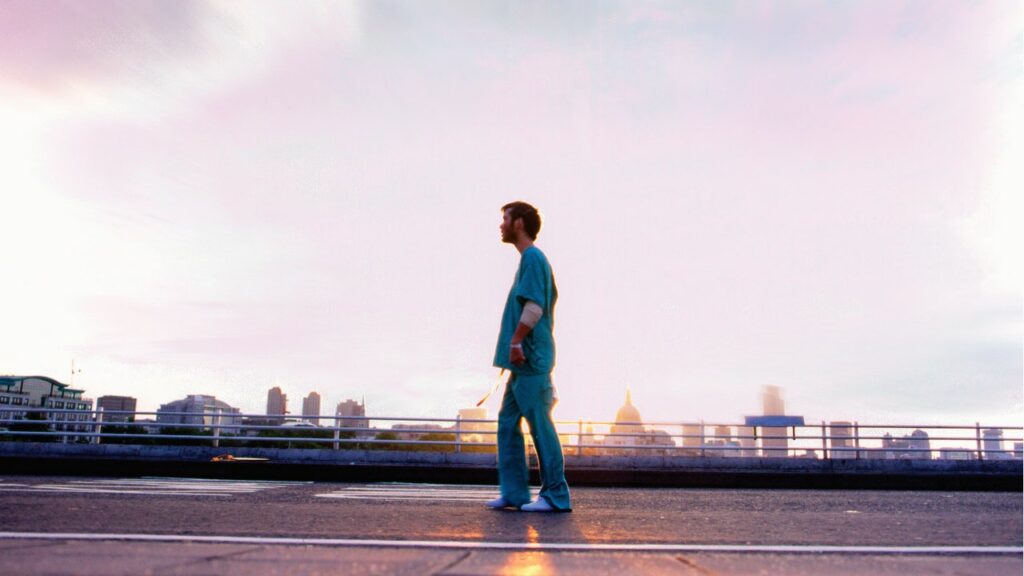The Big Bang of the zombie movie, and the beginning a renaissance for the American horror film. A group of Pittsburgh television and commercial production people—writer/director George A. Romero had made short films for Mr. Rogers’ Neighborhood, including “Mr. Rogers Gets a Tonsillectomy”—made their first feature, working in an idealized collective manner. They wanted to depict a truly revolutionary society that attempts to take over the existing one, then show it being put down by the powers that be. Night of the Living Dead was shot in black and white because the news was still in black and white.
The biggest influence on Night was Richard Matheson’s 1954 novella I Am Legend, a post-apocalyptic, post-outbreak story of a world overrun by vampires and a single man who stalks them by day. Matheson was a defining voice in science fiction and horror, not to mention the best writer on the original Twilight Zone. I Am Legend was a psychological take on horror tropes, applying realism to all the rules of vampires and in turns, explaining and inverting them until the hero becomes the monster the new society needs to deal with.
Matheson’s novel has been adapted for the screen three times, beginning with The Last Man on Earth, starring Vincent Price, with a script from Matheson. It’s not a masterpiece, or even very good, but features a lot of visual signifiers we now see as Romero innovations. There are other Night foreshocks in alien invasion classic The Earth Died Screaming and Herk Harvey’s proto-Lynchian anxiety attack Carnival of Souls. None of these movies are Night of the Living Dead, though. None of them synthesized so many elements that would become essential to the zombie film: cannibalism, zombie lore, UFO jargon, geographic isolation, the white grease paint, the limited cast, the news reports, the sick little girl who turns, the slow burn opening, the hysterical heroine, the graveyard, the isolated farm house, the basement. It’s shocking how much of this movie is just DNA now, including the failed mission to get gasoline and escape that ends in disaster, a beat that’s in every single one of these movies.
The daring choice that Romero and Russo made was to cast the best actor they knew in the lead, which is how local theater actor Duane Jones became one of the first Black performers to star in a horror film. Romero later regretted that he didn’t modify the script to address the fact that the character was Black, and felt it was hippie hubris that made him think not rewriting it was the more radical choice. Jones’ Ben is the only character who trusts himself and his own intuition, and won’t allow others to bowl him over. It was a radical choice to make him the hero in ‘68, but it renders the ending that much more stomach-churning; Jones’ character has survived the zombie apocalypse (and the idiots it’s saddled him with) but to the rural Pennsylvania police he’s still less than human. It’s stomach turning. The day that the final cut of the film was finalized and the prints were being driven to New York for the premiere, Romero got in the car and heard on the radio that Martin Luther King Jr had been assassinated.


